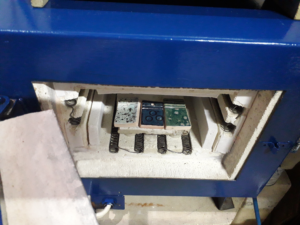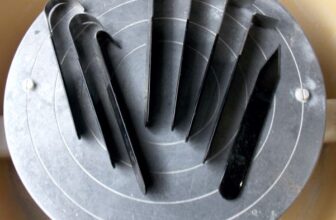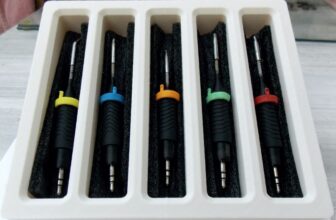
I acquired a small kiln for enameling that can reach up to 900°, depending on the kind of wire element utilized. To adapt it for firing at temperatures around 1240°C, modifications were necessary. I was fortunate to find an intact element that allowed me to determine the wire diameter and reference for resistance measurements using a multimeter. New elements are produced using Kanthal A1, which can withstand temperatures up to 1250°C.

Next, I assessed the condition of the brickwork which was generally good, with only minor damage near the wire element. I sought suitable products for fixing any damaged bricks and settled on white kiln cement from Hot Clay. I purchased a 450g pot which was simple to apply due to its pre-mixed consistency. Repairing the affected brickwork, particularly in areas damaged by an old wire element, involved carefully applying thin layers of the cement to achieve a seamless finish, gradually shaping it with a palette knife until it matched the adjacent brickwork perfectly. The creamy-textured material resulted in successful minor repairs.
Once the brickwork was completed, attention turned to securing the kiln door and adding a safety switch to deactivate the elements if the door was opened. Despite these adjustments and fixes, the external metal casing required attention. After researching various paints, I opted for high-temperature paint commonly used in the automotive industry for parts exposed to high temperatures. This paint had a heat resistance of 350°. When firing up the kiln, there were no unpleasant smells or burning. Nonetheless, the highlight of these renovations was the brickwork cement acquired from Hot Clays.







